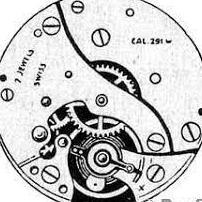Casio pusher button for amw707
-
Recently Browsing
- No registered users viewing this page.
-
Topics
-
Posts
-
By Neverenoughwatches · Posted
The entry and exit stones have different impulse face angles murks. -
Depending on how much of the screw is left, you may be able to screw it further in and it may fall out of the hole that the dial foot sat in. To do this I rough up the tip of the good screw and screw it in, often the rough surface of the good screw and the rough surface on the broken screw get enough of a bite to transmit the torque into the broken section and force it out the other side. Like I said the size of the broken screw needs to be in your favor, but you never know you may get lucky.... or if you get it moving you may be able to then back it out with a screwdriver taking a bite on the rough surface. worth a try
-
I will try this weekend. I've tried several times with my cell phone and it's just too small and recessed to get a good picture. I need to get my macro lens and tripod out and then figure out how to get enough light down the hole in the side of the man plate to actually show the top of the broken screw. I appreciate the effort and will try and get that pic this weekend.
-
Hi, My name is Simeon I am based in Sydney, Australia and have recently got into watch repair / watch making. I am very much a learner having serviced multiple forgotten watches, some of which were actually successful! I have a slowly growing collection of watches, mainly old Soviet, a few Japanese and (not pictured) some Raketas, a Poljot Alarm, an Omega Speedmaster Reduced and a vintage (1972) Tissot Seastar. I like unloved vintage watches, with quirky faces and enjoy bringing them back to life through the simple(!) act of disassembly, clearing and reassembly. I am an Electrical Engineer who also undertook a trade apprenticeship so I am reasonably handy - It's fair to say, I know just enough to get myself in trouble.
-









Recommended Posts
Join the conversation
You can post now and register later. If you have an account, sign in now to post with your account.
Note: Your post will require moderator approval before it will be visible.